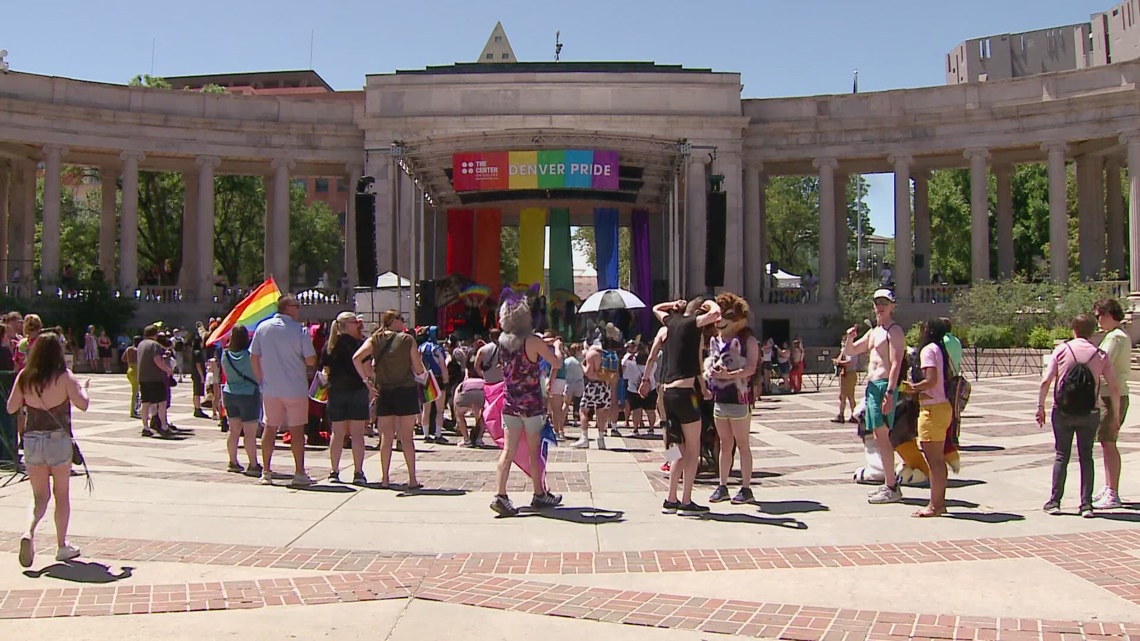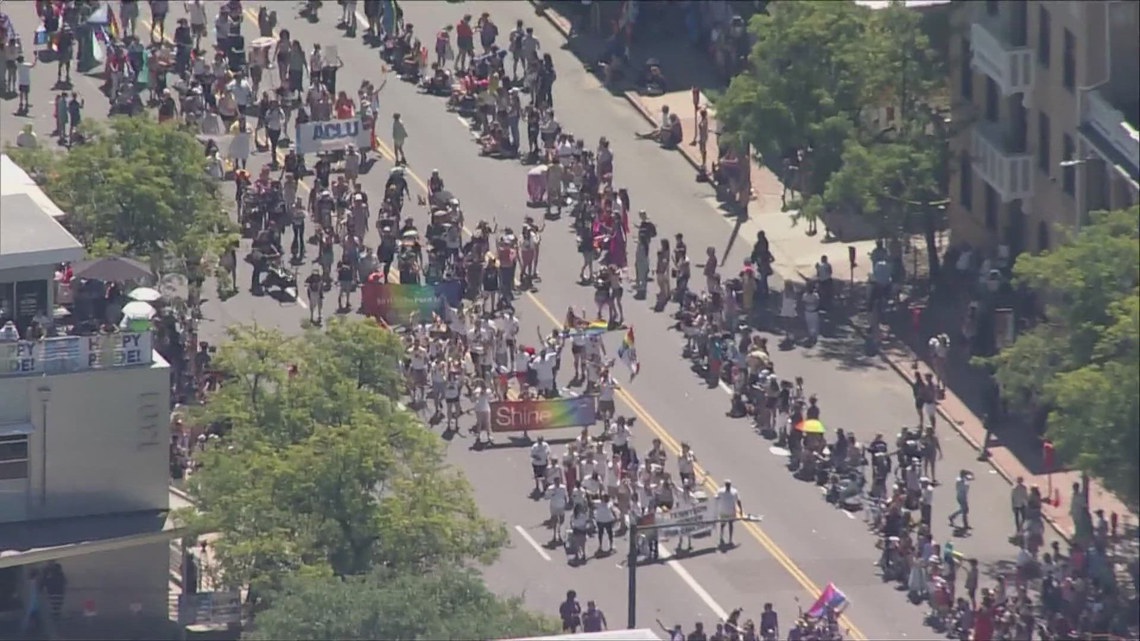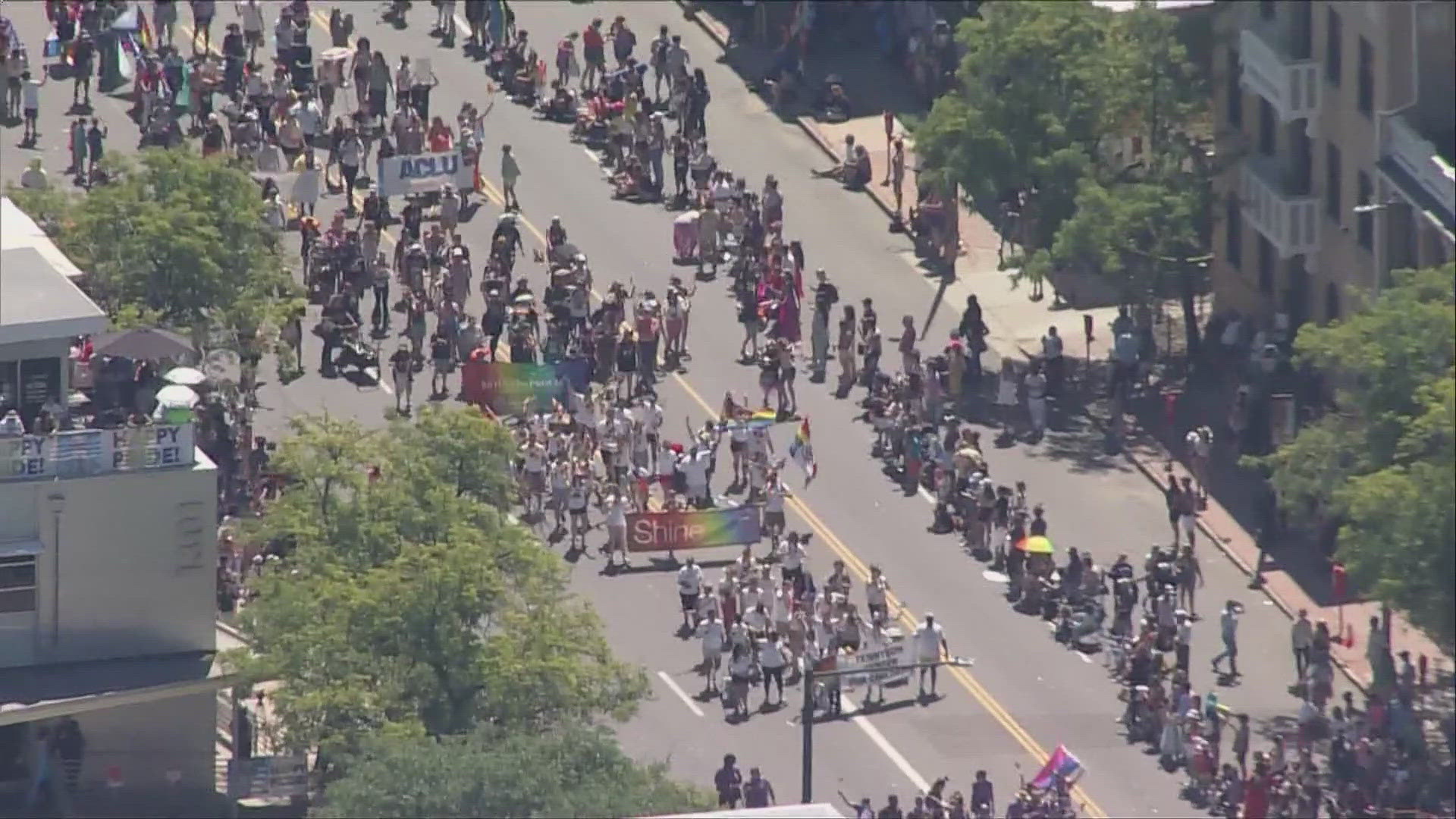DENVER — 2024 makes 50 years of celebration in Denver, but getting there was no walk in the park.
“It is a peaceful and joyful celebration,” said Phil Nash, who served as the first director of what would become the Center on Colfax. He's also the author of 'LGBTQ Denver'—a book that highlights the queer history of the city.
“After the end of World War II, the entire country was swept by a wave of fear of people being different,” Nash said.
“There was a feeling in Denver that homosexuality was a threat to the moral integrity of the city,” he said. “It was a shameful thing, and as a result, any community that developed, developed underground.”
That may lead many to wonder just how the community went from underground, to taking over the streets of downtown Denver.
“We used to only have one side of the street we never had both sides a Colfax,” said Anthony Aragon. He organized the Denver Pride parade for nearly two decades and says Pride as we know it today, started with a small protest across the country.


“It all began with protesting, with Stonewall, and it's part of our movement,” Aragon said.
1969's Stonewall Riot in New York City is known as one of the most pivotal moments in queer history, sparking a movement at the turn of the decade.
“That event really rippled on all across the country - actually all across the world,” Nash said.
On June 29, 1974, those ripples made their way all the way to Denver’s Cheesman Park where the cities first 'Gay-In' was held, which we now know as Denver Pride.
“It was organized by the Gay Coalition of Denver and they passed out balloons that said ‘gay pride,’ but there were only about 50 people there,” Nash said.
The small but mighty group wouldn't stay that size for long. The following year attendance was closer to 500 and the reason is just about as Colorado as it gets.
“There were 11 kegs of beer donated,” Nash said. ” So, there was a bigger attraction for many people to come because there was free beer.”
Since then, pride has grown every year. Out and proud, the LGBTQIA+ community made monumental strides toward visibility and acceptance.
“In 1976, a famous drag queen named Christie Lane, also known as, Christopher Sloan obtained the first parade permit to allow for the first gay pride parade in Denver,” said Nash.


The LGBTQIA+ community in Denver made was making much progress, but soon after, things took a turn.
“The 1980s was the time of great sorrow in the community because of AIDS,” Nash said.
Reports from the Centers for Disease Control and Prevention show over 100,000 people died from aids between 1981 and 1990, greatly impacting gay men in particular.
“Dozens of the people I knew did not survive the AIDS epidemic,” Nash said.
A community in mourning still had much more work to do.
“In 1983, during the next mayor election, there was a candidate named Frederico Pena who tried to build a broad coalition of Latinos, labor unions, the African American community and the LGBTQ+ community,” said Nash.
Pena ended up being elected and while in office, he ended discriminatory policing and appointed Carol Hunt as his liaison to the community. Hunt would be the first openly queer person in Denver government.
Nash says from then on, the doors of city hall were open to the LGBTQIA+ community and politicians were paying attention.
"Before long we started seeing them showing up for Pride parades because they began to understand that the gay vote could tip an election," said Nash.


By 1990, a group called the Equal Protection Ordinance Coalition (EPOC), succeeded with Denver City Council passing a comprehensive human rights ordinance. Implementing the same right for queer people that Aragon says have been under attack in recent years.
“What I like to remind people of is we have these protections in Denver and Colorado, but our LGBTQ brothers and sisters across the nation do not,” Aragon said.
The American Civil Liberties Union (ACLU) shows that right now, there are more than 500 anti-LGBTQIA+ bills in the United States.
“Just based on where we are as a country, these rights could be taken away from us,” said Aragon. “I think it's really important that we not only are visible, but that we invite our family or friends or coworkers to come out and celebrate with us as well.”
“Pride is no longer just for LBGTQ people. Pride is for everyone,” said Nash. “I would say that I have lived long enough now to know that, despite the setbacks, we always win in the end.”
Nash has this parting message for anyone who may be struggling with their identity.
“I guess my message would be, 'Live out,'” Nash said. “You may experience consequences, and they may be lifelong consequences, but the rewards of coming out and sharing who you are fully with your family can have magical effects.”
> Watch 9NEWS original shows, live Colorado news and weather updates, daily forecasts, and sports coverage for free on the 9NEWS+ app on Roku and Fire TV.
SUGGESTED VIDEOS: LGBTQ+ Stories
9NEWS+ has multiple live daily shows including 9NEWS Mornings, Next with Kyle Clark and The Culture Report, an original streaming program. 9NEWS+ is where you can watch live breaking news, weather updates and press conferences. You can also replay recent newscasts and find videos on demand of our top stories, local politics, investigations and Colorado specific features.
To download 9NEWS+ on Roku search for KUSA.
To download 9NEWS+ on Fire TV search for 9NEWS.

